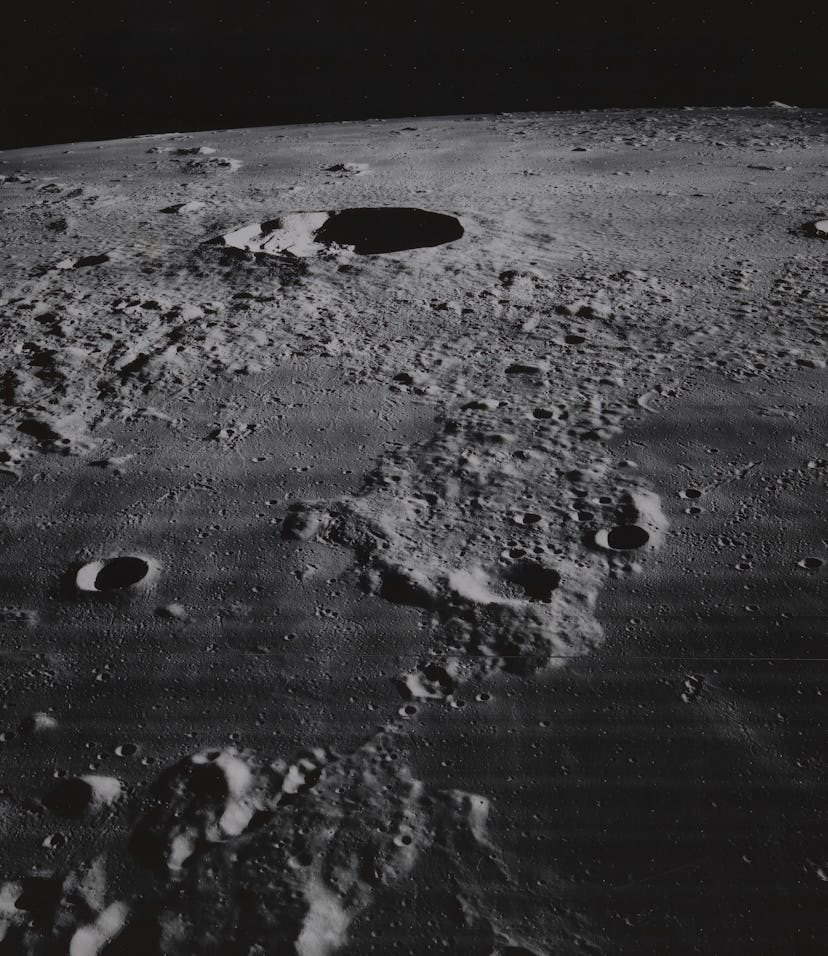Space
Water on the moon may be right within astronauts' reach
A new study suggests pockets of ice – and thus, water – are far more abundant than we thought. That's good news for future colonies.

The surface of the moon may be speckled with usable water, in the form of small ice pockets that haven’t seen the light of day for billions of years, scientists announced today. If so, the possibility of human settlement just got a lot more viable.
Using data from NASA’s Lunar Reconnaissance Orbiter, researchers from the University of Colorado at Boulder estimate that areas on the moon existing in a state of permanent shadow may amount to roughly 15,000 square miles, within which ice reservoirs could be abundant. That’s more than double the previous estimate for these so-called cold traps, accounting for pockets of ice as large as a crater’s interior down to those as small as a penny. The news comes alongside another study today that reports the detection of molecular water on the moon. For once, things are lookin' good.
“If you can imagine standing on the surface of the moon near one of its poles, you would see shadows all over the place,” said Paul Hayne, assistant professor in the Laboratory of Atmospheric and Space Physics at CU Boulder, in a statement. “Many of these tiny shadows could be full of ice.”
Water is life — The ability to harvest water ice on the moon is key to any plan for sustained human presence, be it research-focused astronaut colonies or pit-stops to deep space. More ice means more habitability potential. “If we’re right, water is going to be more accessible for drinking water, for rocket fuel, everything NASA needs water for,” Hayne says.
In the study published to the journal Nature Astronomy, the researchers conclude the surface of the moon may look a lot like a golf ball when considering its cold traps, with a smattering of small pockmarks across its entirety rather than simply those in large impact sites alone. Micro cold traps may make up 10-20 percent of the area suspected to contain frozen water, the team posits.
“The temperatures are so low in cold traps that ice would behave like a rock,” Hayne said. “If water gets in there, it’s not going anywhere for a billion years.”
Due to the moon’s position in relation to the sun, some parts of enormous impact craters like Shackleton Crater or Shoemaker Crater are never exposed to light. Ever. Consequently, these regions of permanent darkness can drop to minus 300 degrees Fahrenheit — not ideal for whoever gets stuck on ice-gathering duty.
But the new picture of the moon the researchers have painted using observational data and mathematical recreations makes it all a lot less daunting. “Astronauts may not need to go into these deep, dark shadows,” Hayne said. “They could walk around and find one that’s a meter wide and that might be just as likely to harbor ice.”
To be continued — There’s really no way to know for sure just how abundant the ice is in these dark regions without going to the moon and digging. The findings are promising, though, and we may soon have those answers. The Lunar Compact Infrared Imaging System (L-CIRiS), led by Hayne in partnership with NASA, will capture heat-sensing panoramic images near the lunar south pole in 2022. Rovers will help too, like the water-seeking VIPER scheduled for a 2023 launch. And if all else fails, humans could be back on the moon to do the job themselves in a matter of years.